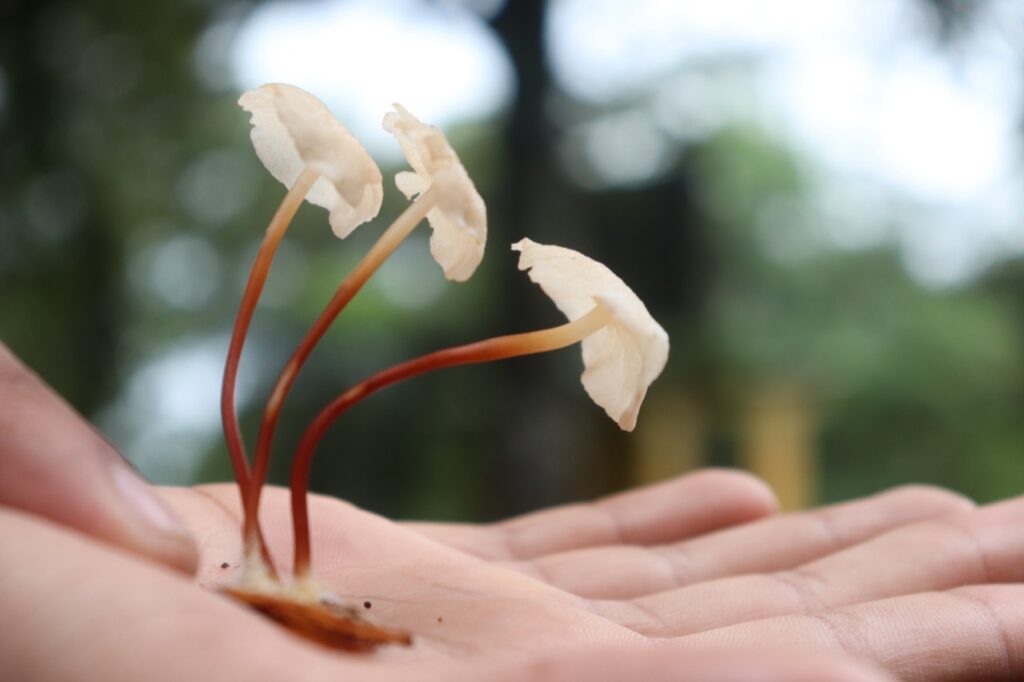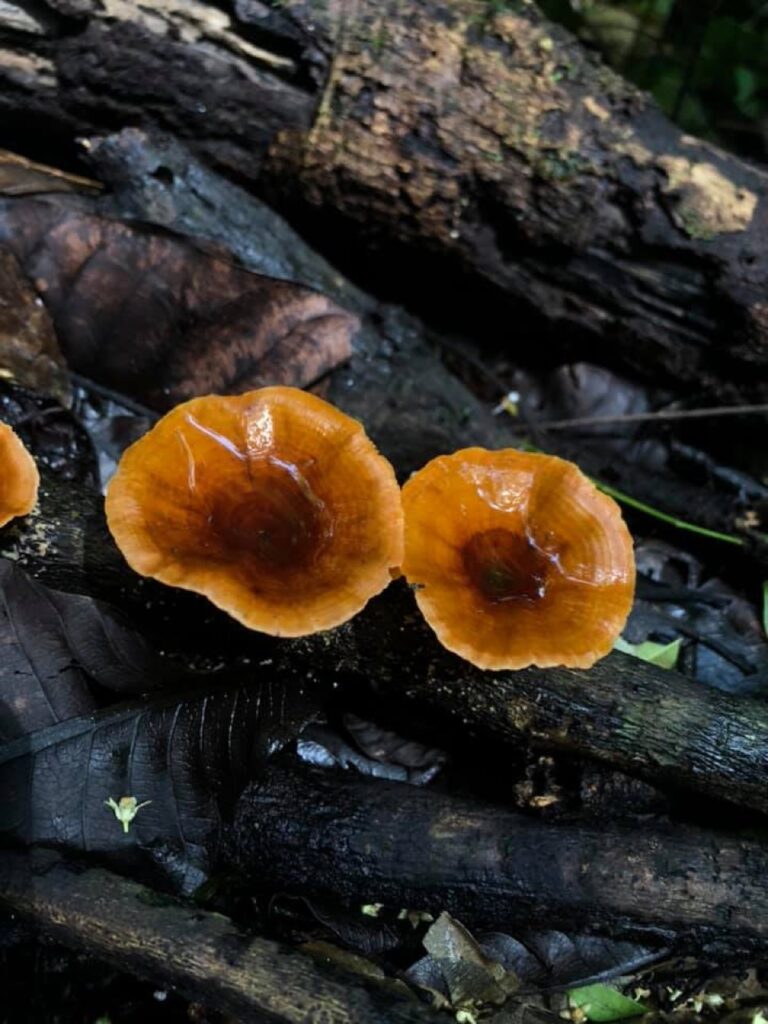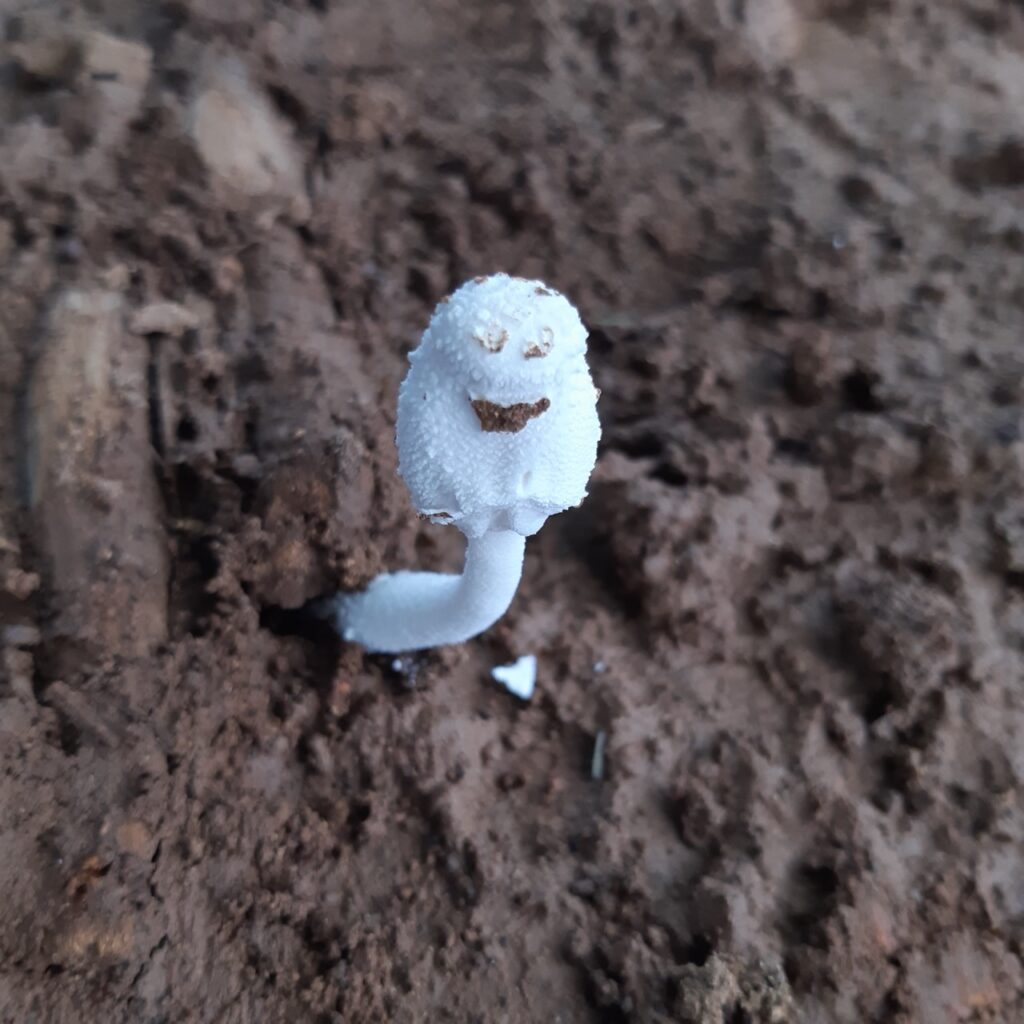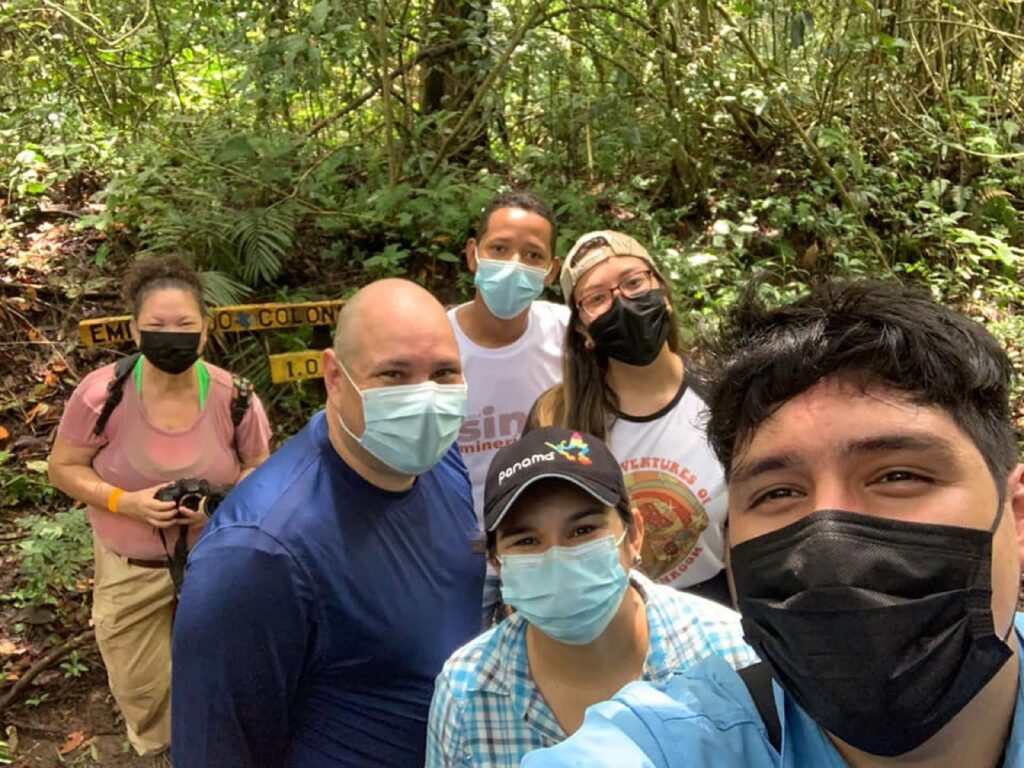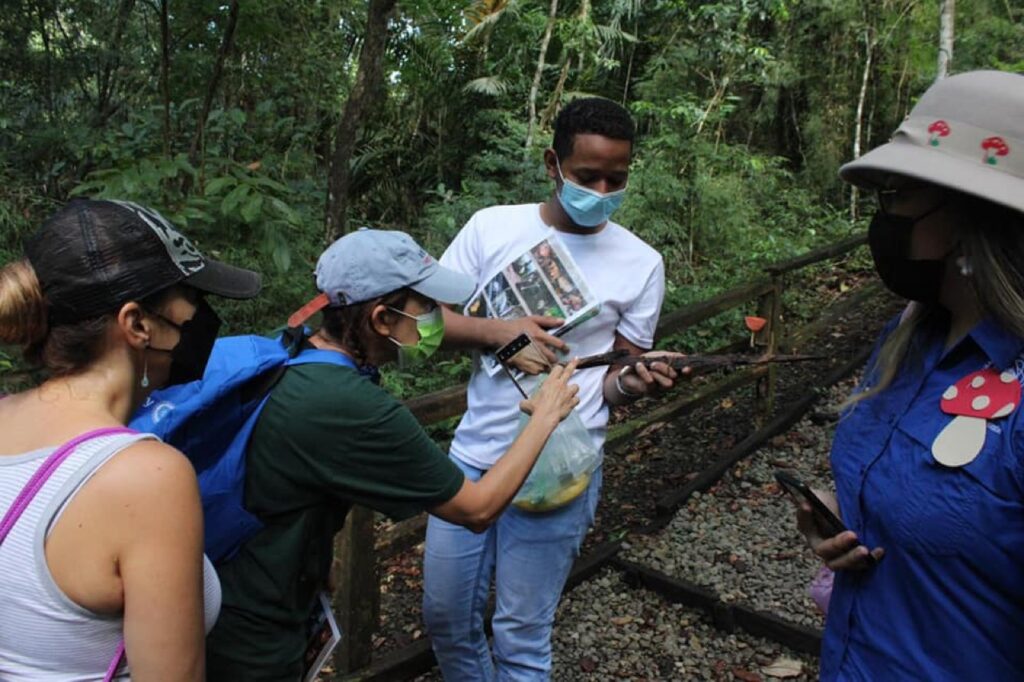The Fungi Kingdom: Nature’s Great Recyclers
Because of their ability to adapt to climate change and lessen its impacts, fungi are essential to life on the […]
Because of their ability to adapt to climate change and lessen its impacts, fungi are essential to life on the planet and contribute to the vitality of our tropical forests.
At the ground level of the forests surrounding the Canal strip, a layer of organic matter accumulates, giving rise to a dynamic microenvironment full of activity, where something new is always happening. It is here in this humid, dark and little explored world, where the mysterious “paragüitas de sapo” (toad umbrellas), recyclers of nature, grow.
Known to children as “toadstool umbrellas”, they are actually only a part of the fungus: they are the reproductive organ of the fungus and contain thousands of microscopic spores that give rise to new individuals.
Most of the mushroom’s body is not visible because it is hidden in the soil, forming an intricate network of long filaments known as mycelium. These subway structures form a gigantic network that grows throughout the forest known to scientists as the “forest internet”. It acts as a complex network for the exchange of vital supplies that interconnects with all vegetation and transfers nutrients from one plant to another. They sustain life and contribute to the development of the forest by helping the ecosystem to thrive; one tree can obtain food from another tree by using the mycelium as a connector.
Despite their invisible presence and the fact that at first glance their usefulness is not recognized, their existence and their interactions with other species have a great influence on the development of the forest.
Great diversity
Some experts estimate that there are 2 to 4 million species of fungi on the planet. In tropical areas, it is estimated that for each species of vascular plant, there are 8 species of fungi. They live in all parts of the forest on different substrates and have different shapes, sizes, colors and characteristics. Some of them have medicinal properties and are key elements in the production of antibiotics (penicillin), as well as psychoactive mushrooms that are being investigated for their use in the treatment of mental disorders. Many mushrooms are edible and are used in gastronomy for their nutritional value, while others are dangerous because they are poisonous. Some are widely used in the food industry (bread, cheese, beer). Some are parasites.
Fungi are living beings of a very different nature from fauna and flora, they do not belong to the animal or plant kingdoms. Many years ago, they were thought to be some kind of plant, but they are not vegetables, they have no leaves or roots and do not photosynthesize. Fungi have their own separate kingdom, the megadiverse fungi kingdom which includes mushrooms, yeasts and molds. They are one of the most important components of soil biota. They form a fundamental part of one of the essential microbiological processes in forests, the process of transformation of inert biomass of plant and animal origin into components such as carbon, nitrogen and nutrients that go to the soil, to be absorbed by plants. For this reason, they influence the bioavailability of nutrients in a given ecosystem. Without fungi, organic matter would take centuries to degrade.
Fungi feed by secreting digestive enzymes and then reabsorbing nutrients. Depending on their ecological role and the way they feed, they are classified in different ways. Some species are saprophytes and feed on dead organic matter. Others live in symbiosis and associate with certain algae to form lichens, the algae providing carbohydrates and protection to the fungus in exchange for water and mineral salts.
Lichens are excellent bioindicators of the environmental health of different ecosystems and their presence is associated with undisturbed forests of crystal clear water and clean air. They also promote soil formation and the creation of microhabitats for other organisms.
On the other hand, a group of fungi associate with trees through their roots in a relationship of mutual aid, being of special value in species of agricultural and forestry importance.
In this symbiotic union, known as mycorrhiza, the fungus provides nutrients such as phosphorus and nitrogen to the tree, and the tree provides carbohydrates and water. Finally, other fungi live inside the plant tissue without harming the plant and establish a complex symbiotic relationship where both benefit.
A network of experts and amateurs
Oliver Rodríguez, founder of the Fundación Micológica de Panamá, explains to El Faro that the foundation seeks to “create a community of mycologists and fungi enthusiasts and collaborations that will help us grow as a society by eliminating the barrier between the public and the scientific community”. This group has carried out tours and meetings where topics such as molecular biology, gastronomy, environmental education, among others, are presented and analyzed.
Rodríguez highlights the participation of the foundation in the Festival Allí donde bailan los monos, organized by the Environmental Committee of the Baila Mono River in the community of Santa Clara de Arraiján.
Photos courtesy of the Panama Mycological Foundation.

